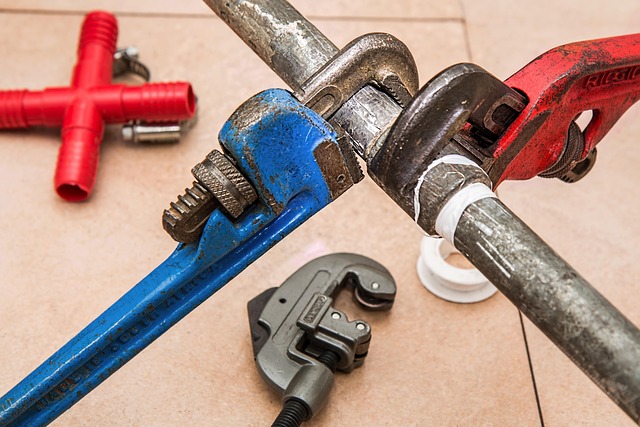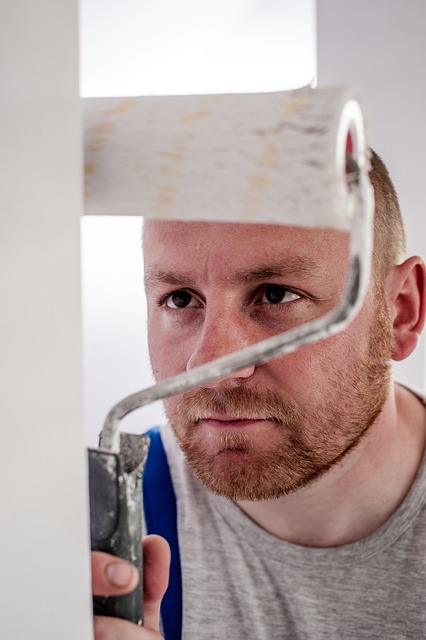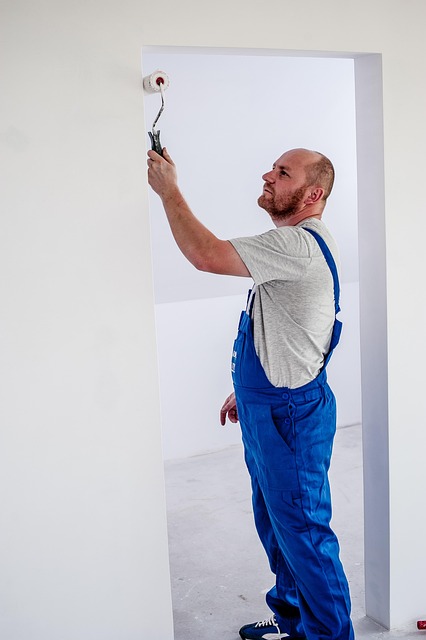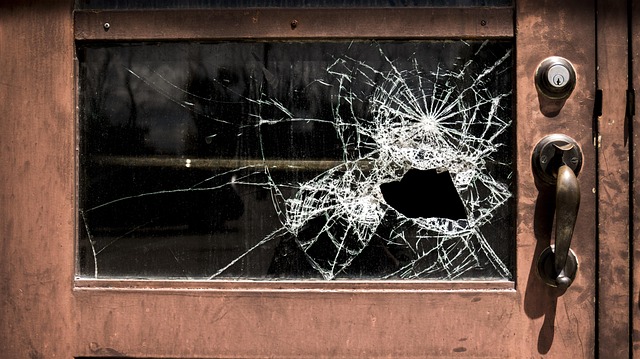Concrete cracks impact structure integrity. Visual inspect cracks for width, depth, length, and water presence to determine severity. Use filler materials for minor cracks and professional interventions for larger ones. Proper surface preparation is crucial before crack repair. Avoid simple fills or incorrect methods for different crack types. Regular crack repair prevents further damage, preserving concrete structures' aesthetic appeal and integrity.
Concrete cracks can range from mere aesthetics to structural concerns. Understanding crack types and causes is the first step towards effective repair. This comprehensive guide delves into various aspects of crack solutions, from assessing severity through visual inspections to selecting the right repair materials and techniques like filling, sealing, and surface preparation. Learn about preventive measures, common mistakes to avoid, and long-term maintenance tips for optimal concrete durability.
Understanding Concrete Cracks: Causes and Types

Concrete cracks can range from small, hairline fractures to large, structural gaps, each with its own potential impact on the integrity of a structure. Understanding crack types and their causes is the first step in effective concrete crack solutions.
While many cracks result from normal aging processes, certain conditions accelerate concrete deterioration. These include environmental factors like extreme temperatures, freezing and thawing cycles, and exposure to chemicals or deicing salts. Poor initial construction quality, improper concrete mixture ratios, and settlement or movement of the underlying substrate also contribute to crack formation. Identifying the specific type of crack—such as vertical, horizontal, diagonal, or network cracks—is crucial for selecting the appropriate crack repair method.
Assess Crack Severity: Visual Inspection Methods

Before selecting a crack repair method, it’s crucial to assess the severity of the concrete cracks. A visual inspection is often the first step in this process. Inspectors should look for factors like crack width – wider cracks typically indicate more severe structural damage, depth, and length. The presence of water or moisture at the crack can also suggest potential issues with underlying structural integrity.
Using simple visual cues and basic tools, you can assess the overall condition of concrete surfaces. This preliminary evaluation helps narrow down suitable crack repair techniques, whether it’s minor cracks that can be filled and sealed or more extensive damage requiring complex structural interventions.
Repair Options: From Fillers to Structural Solutions

When it comes to concrete crack repair, the options are vast, ranging from simple filler materials to more complex structural solutions. For smaller cracks, filler products like epoxy injections or polyurethane foams can effectively seal and prevent further damage. These quick-drying substances create a strong bond with the existing concrete, offering both structural support and aesthetic improvement.
However, for larger or structurally significant cracks, complete crack repair goes beyond surface-level fixes. Here, professional intervention is recommended. Structural solutions involve methods like carbon fiber reinforcement, which provides immense strength while promoting healing. In severe cases, replacement of the damaged section may be necessary, ensuring long-lasting durability and safety.
Choosing the Right Crack Repair Material

When addressing concrete crack repairs, selecting the appropriate material is a key decision that will impact both the durability and aesthetics of the repair. Different types of cracks require specific solutions; for instance, epoxy injections are ideal for narrow, controlled cracks, offering exceptional strength and longevity. On the other hand, for wider or structural cracks, polyurethane foams provide excellent filling capabilities and can even help prevent water penetration.
Proper material choice ensures the crack repair is effective and long-lasting. It’s crucial to consider factors like crack width, depth, cause, and expected environmental conditions when deciding on a Crack Repair method. Professional assessment can aid in determining the best course of action, ensuring the chosen material sets correctly, matches the surrounding concrete, and provides the necessary structural support.
Surface Preparation: Cleaning and Etching for Adhesion

Before addressing any crack repair issues, proper surface preparation is crucial. The first step involves cleaning the concrete surface thoroughly to remove any dirt, grease, or loose debris that could hinder adhesion. This can be achieved through high-pressure washing or using specialized cleaning agents designed for concrete. Once the surface is clean, etching comes into play. Etching helps create a rougher texture on the concrete, allowing for better mechanical bonding with the crack repair material.
This process ensures that the new material will stick firmly to the existing concrete, providing a durable and long-lasting crack repair solution. Proper cleaning and etching significantly improve the overall effectiveness of crack repair methods, making it essential in the concrete restoration process.
Filling and Sealing Techniques for Optimal Results

When it comes to crack repair, filling and sealing techniques are essential for achieving optimal results in concrete structures. The first step involves preparing the cracked area by cleaning and degreasing to ensure proper adhesion of the filler material. This is crucial as it prevents water seepage and ensures longevity of the repair.
After preparation, choosing the right filler is paramount. Epoxy injections or polymer-based fillers are popular choices due to their high strength and flexibility. These materials fill the crack completely, creating a strong bond that matches the concrete’s structural integrity. Sealing afterward with a waterproof membrane further reinforces the repair, protecting against moisture intrusion and preventing future cracks from forming.
Preventive Measures: Strengthening Concrete Against Cracks

Preventative measures play a crucial role in mitigating concrete crack repair needs. To strengthen concrete and prevent cracks, contractors can implement several strategies during initial construction. One effective approach is to ensure proper mixing and placement of concrete, including using adequate cement, aggregate, and water ratios. This blend should meet the required strength standards for the particular application. Proper compaction and finishing techniques are also vital, as they minimize air pockets and stress points that could lead to cracking.
Regular inspection and maintenance can further prevent cracks from forming or expanding. Identifying potential issues early on allows for timely intervention using methods like surface treatments, which fill minor imperfections and create a protective barrier. Additionally, controlling environmental factors such as moisture levels and thermal stresses can significantly reduce concrete cracking. This includes proper waterproofing and addressing temperature fluctuations to maintain the integrity of the structure.
Common Mistakes to Avoid During Crack Repair

When addressing concrete crack repairs, it’s essential to be aware of common mistakes that can lead to inadequate solutions and future structural issues. One of the biggest blunders is trying to fix cracks with a simple filling or sealing without first assessing the extent of the damage. Concrete cracks can be superficial or indicative of deeper structural problems; ignoring this crucial step may result in temporary fixes that fail over time.
Another mistake is using the wrong repair method for each crack type. Different concrete cracks require distinct approaches—from minor hairline cracks to larger, more severe ones. Using an incorrect technique, such as applying excessive pressure during injection or using inappropriate materials, can cause further damage and compromise the integrity of the entire structure.
Long-Term Maintenance: Ensuring Concrete Durability

Regular crack repair is a key component of long-term concrete maintenance. Ignoring cracks can lead to further damage and more extensive repairs, as they can indicate underlying structural issues or changes in soil conditions. Prompt action is essential; minor cracks can be easily fixed with products designed for this purpose, ensuring the surface remains smooth and durable.
Over time, concrete hardens and becomes less flexible, making it susceptible to weathering and environmental factors. Regular maintenance involves inspecting surfaces for any signs of damage and addressing them promptly. By implementing a crack repair strategy, you protect your concrete from water penetration, which can cause corrosion and weaken the structure. This proactive approach ensures the longevity of your concrete structures, maintaining their aesthetic appeal and structural integrity.
